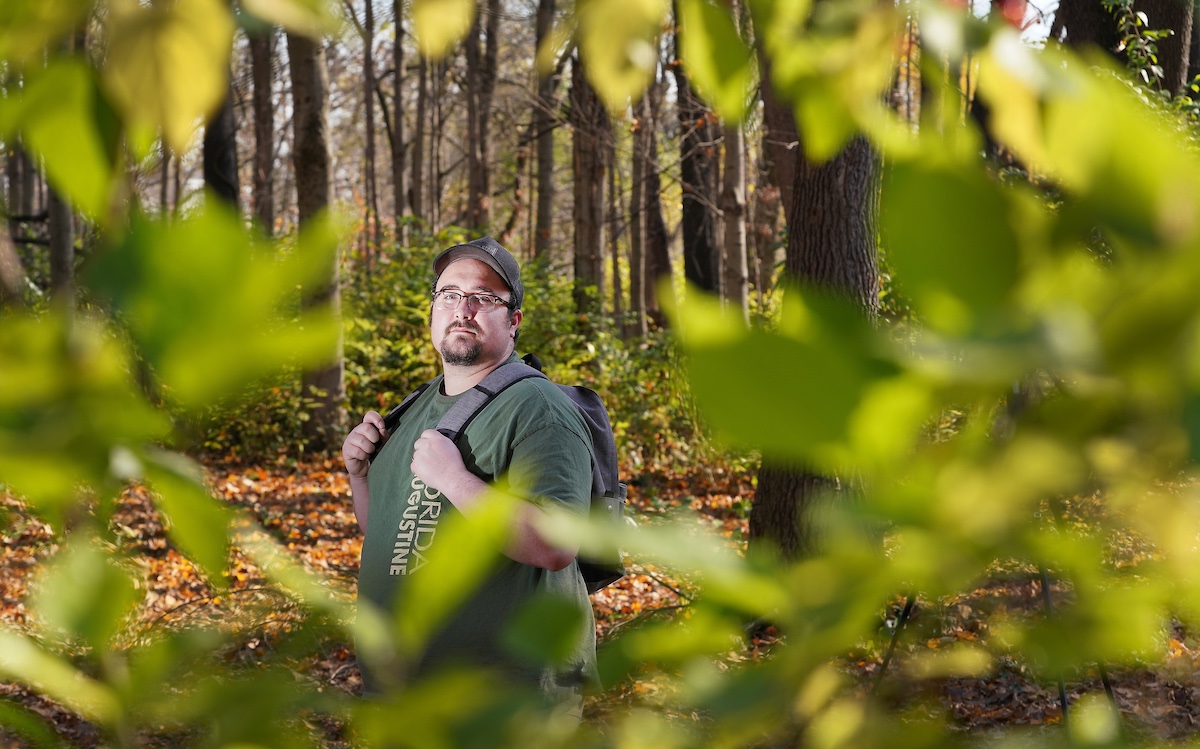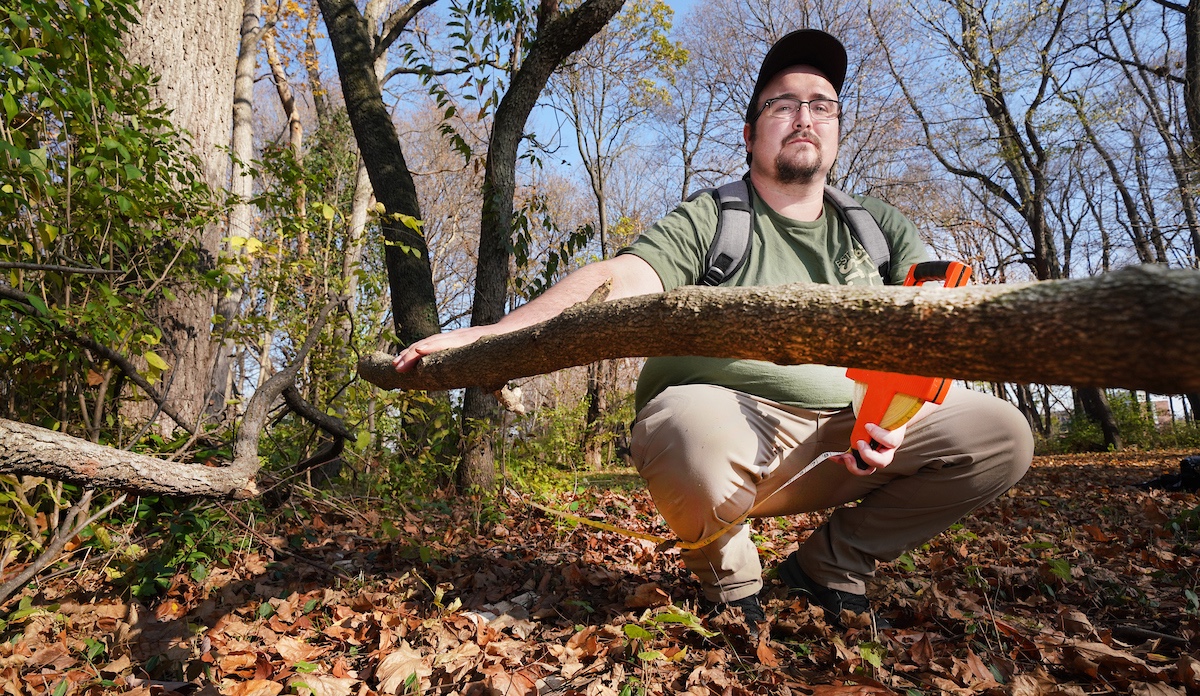R.D. Sample - Graduate Ag Research Spotlight
Getting to do a study that’s going to lead to better management of a charismatic and popular species is awesome. I know what I’m doing is important because I’ve talked to the forest managers and the deer managers.
- R.D. Sample, PhD, Department of Forestry and Natural Resources
THE STUDENT
R.D. Sample’s hometown of Winslow, Arkansas, is on the outskirts of the Ozark National Forest, and the land provided Sample’s main entertainment growing up, including hunting, fishing and kayaking. He earned a bachelor’s degree in biology at the University of Arkansas – Fort Smith and a master’s degree in forestry resources at the University of Arkansas – Monticello, where his research focused on tree physiology. “But that wasn’t my primary interest,” he says. “Once I realized I could make my love of the outdoors a career, I wanted practical experience and a PhD in a more ecological field.” The opportunity to study forest biology at Purdue as part of the Integrated Deer Management Project, a multiyear research effort led by the forestry and natural resources department in partnership with the Indiana Department of Natural Resources (IDNR), “hit that nail on the head,” Sample says. He came to study with Michael Jenkins, professor of forest ecology, in August 2018 and defended his dissertation in November 2022.
THE RESEARCH
“Our goal as a whole is better deer management throughout the state,” says Sample, one of three FNR doctoral students on the project. His role was to evaluate the forest in terms of habitat for deer, including the richness and diversity of plant types available to them. “I spent five to seven days a week out in the field from February to August because we were doing so much,” he says. His work included studying deer preferences for, and the availability of, woody plants. Especially exciting was the opportunity to use a new technique in which he extracted plant DNA from deer pellets to determine what the deer were eating. Support from the lab of Andrew DeWoody, FNR professor of genetics, was vital to this effort, Sample adds. “We were one of the first to do this at such a large scale,” he says. “It informs us about the feeding decisions deer are making in the wild and how that’s being influenced by the surrounding landscape.”
OPPORTUNITIES
His experience in varied Indiana forests has made Sample appreciate the generosity of private land owners  who allowed his research on their properties. The project offered valuable networking opportunities across academic disciplines and with the IDNR, he says. His research has led to Extension presentations to landowners about managing deer, and he has published in academic journals, the White Tail Deer Report, and Purdue Extension publications. “I hope that some of my research reaches a broad range of people,” he says. Jenkins, he adds, has been an ideal advisor — “extremely knowledgeable but also laid back.”
who allowed his research on their properties. The project offered valuable networking opportunities across academic disciplines and with the IDNR, he says. His research has led to Extension presentations to landowners about managing deer, and he has published in academic journals, the White Tail Deer Report, and Purdue Extension publications. “I hope that some of my research reaches a broad range of people,” he says. Jenkins, he adds, has been an ideal advisor — “extremely knowledgeable but also laid back.”
FUTURE PLANS
Sample will begin his new job as an ecologist with the U.S. Forest Service in the Hoosier National Forest in January, and is happy to remain in his wife’s home state of Indiana. He still spends his spare time outdoors. “I’m an avid fisherman,” he says. “I enjoy walking around and looking at forest plants and taking in the best of what nature has to offer.”






